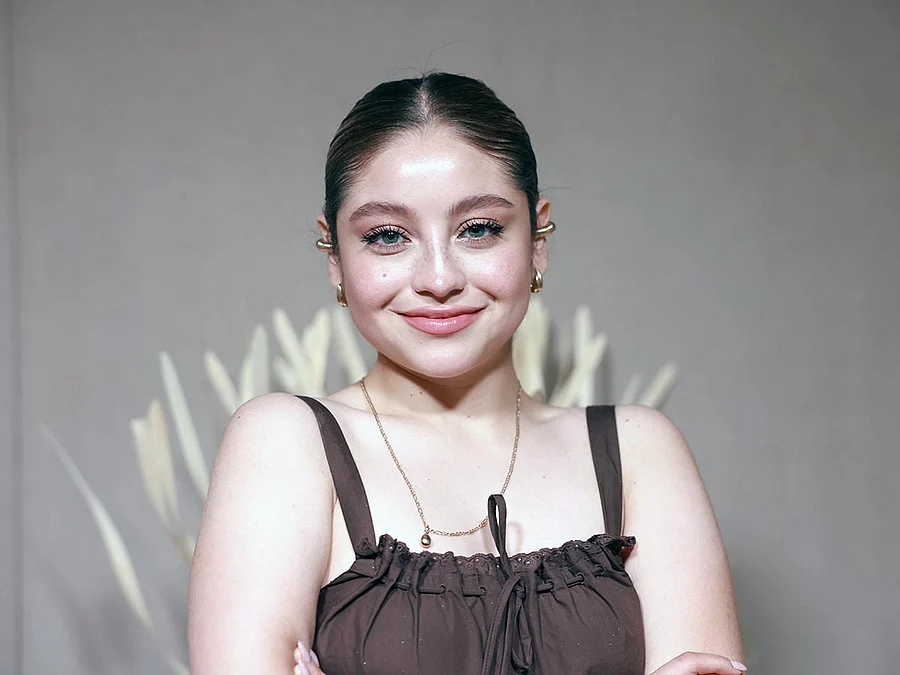Disney darling Karol Sevilla on premiering her career’s first Mexican film in Dubai: ‘It was our biggest dream’
By Manjusha Radhakrishnan
Copyright gulfnews

Shaking off stereotypes
If you ask Sevilla, part of the thrill is also correcting Hollywood’s lazy clichés about Mexicans. “We are not what Hollywood shows,” she says firmly. “Mexican women are powerful, and we can achieve anything we want. My audience is young, and I want to grow with them—share my mistakes so they don’t repeat them and take better decisions. That’s my mission.”
It helps that 17 million fans hang on her every Instagram story. But San Juan swears her follower count wasn’t part of the casting brief.
“When Karol auditioned, I had no idea she had such a fan army. What struck me was her acting. She was a hurricane. That’s why I cast her.”
From Disney sparkle to stormy seas
Let’s not sugarcoat it: shaking off the Disney halo isn’t easy. Sevilla was 15 when Soy Luna turned her into a global teen idol. Now in her early 20s, she’s making it clear she won’t be boxed in forever. “The most difficult part was leaving behind that image,” she admits. “In Disney, everything is perfect. Here, everything is complicated, more wild, more erotic in a way. It was like swimming into a sea with rough tides.”
Nervous about stepping onto a set with seasoned actors, she found herself embraced by the ensemble. “They made me feel part of the team,” she says. “And Edgar guided me into creating Teresa, a character who is complex and layered.”
San Juan nods approvingly. “She was hungry for cinema. She wasn’t afraid to step out of her comfort zone and take risks. That’s why I wanted her.”
The business of big dreams
Behind the glamour, Almost Paradise was no walk in the park. “This was one of the most expensive films ever made in Mexico,” San Juan says. “We shot across two countries, in three languages—Spanish, Italian, and English—and now it’s subtitled in Arabic. Funding was the hardest part. We had to secure public funds from Mexico and Italy, plus support from Cinépolis and NBC Universal Telemundo. Without them, it wouldn’t have been possible.”
Still, the struggle seems worth it. The film became a hit in Mexico, and San Juan insists that success came down to chemistry. “We became family,” he says. “Everyone who worked on the film still loves each other. That’s why it worked.”
Critics vs. cash
So what matters more: glowing reviews or packed theatres? Sevilla doesn’t hesitate. “Critical success,” she says. “Even bad reviews are useful—they teach you something. I’d rather learn from that than chase money.”
San Juan plays the pragmatist. “For me, cinema is an industrial art. You make films for people, not for yourself. Yes, I care about critics, but good reviews usually mean more people watch. So in the end, they’re linked.”
The Mexican wave
Both are quick to credit the Mexican filmmakers who’ve paved the way internationally. “Alfonso Cuarón is a genius,” San Juan says. “His films capture grief, closure, complex emotions, and strong female characters. He’s one of Mexico’s greatest artists.”
And while neither is claiming Cuarón-level status yet, they are carving out their own path. Sevilla is reinventing herself from teen icon to serious actress, and San Juan is determined to make Mexican cinema bigger, bolder, and more global.
As our conversation winds down, Sevilla flashes the same megawatt smile that once sold roller-skating Disney fantasies to millions of kids. Only now, she’s older, wiser, and a little braver. “I’m proud to be a Disney darling turned adult actress, taking risks and growing with my audience,” she says. San Juan grins beside her. “We hope Almost Paradise is paradise for your viewers.”



